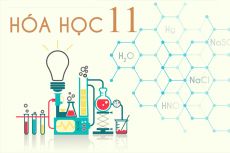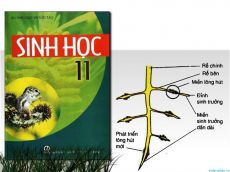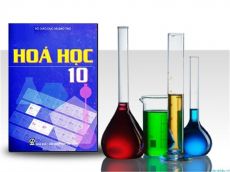Chọn từ có trọng âm chính khác với các từ còn lại: language, diverse, promote, combine
Suy nghĩ và trả lời câu hỏi trước khi xem đáp án
Lời giải:
Báo sailanguage /ˈlæŋɡwɪdʒ/
diverse /daɪˈvɜːs/
promote /prəˈməʊt/
combine /kəmˈbaɪn/
Câu A trọng âm rơi vào âm tiết 1, còn lại là âm tiết 2
Câu hỏi liên quan
-
Birds that feed in flocks commonly retire together into roosts. The reasons for roosting communally are not always obvious, but there are some likely benefits, In winter especially, it is important for birds to keep warm at night and conserve precious food reserves. One way to do this is to find a sheltered roost. Solitary roosters shelter in dense vegetation or enter a cavity- horned, larks dig holes In the ground and ptarmigan burrow into snow banks- but the effect of sheltering is magnified by several birds huddling together in the roost, as wrens, swifts, brown creepers, bluebirds, and anis do. Body contact reduces the surface area exposed to the cold air, so the birds keep each other warm. Two kinglets huddling together were found to reduce their heat losses by a quarter and three together saved a third of their heat.
The second possible benefit of communal roosts is that they act as "information centers". During the day, parties of birds will have spread out to forage over a very large area. When they return in the evening some will have fed well, but others may have found little to eat. Some investigators have observed that when the birds set out again next morning, those birds that did not feed well on the previous day appear to follow those that did. The behavior of common and lesser kestrels may illustrate different feeding behaviors of similar birds with different roosting habits. The common kestrel hunts vertebrate animals in a small, familiar hunting ground, whereas the very similar lesser kestrel feeds on insects over a large area. The common kestrel roost and hunts alone, but the lesser kestrel roosts and hunts in flocks, possibly so one bird can learn from others where to find insect swarms. Finally, there is safety in numbers at communal roosts since there will always be a few birds awake at any given moment to give the alarm. But this increased protection is partially counteracted by the fact that mass roosts attract predators and are especially vulnerable if they are on the ground. Even those in trees can be attacked by birds of prey. The birds on the edge are at greatest risk since predators find it easier to catch small birds perching at the margins of the roost
Which of the following is not mentioned in the passage as an advantage derived by birds that huddle together while sleeping?
-
Read the following passage and choose the best answer for each blank.
What is the Association of Southeast Asian Nations (ASEAN) and what is its purpose? The Association of Southeast Asian Nations (ASEAN) is a multilateral organization which was (26) _____ to give Southeast Asian states a forum to communicate (27) _____ each other. Since the region had a long colonial past and a history of endemic warfare, there has never been much peaceful and constructive (28) _____ between kings, presidents and other officials. A neutral forum was, (29) _____, a very useful development for all of those countries.ASEAN was formed as a result of the Bangkok (30) _____ of 1967 and initially had five members: Thailand, Malaysia, Indonesia, (31) _____ Philippines and Singapore. Brunei (32) _____ joined in 1984 after it had won independence from Britain. Vietnam became the seventh member of the group, officially joining in 1995. (33) _____ several years of negotiation, Myanmar and Laos joined in 1997 and the final member of the ten, Cambodia, joined in 1999. The only (34) _______state in Southeast Asia which is not a member of ASEAN is now East Timor. It is still (35) _____ vulnerable and fragile to be able to participate for the foreseeable future.
(27) _____
-
Choose the best answer to complete the sentence.
ASEAN economic cooperation _______ many areas, such as agriculture, industry, services, transportations, and tourism.
-
Choose the option among A, B, C or D that best fits the blank space in the following passage:
"Cambodia, country in Southeast Asia, also known (1)…… Kâmpuchéa. More than a thousand years ago, Cambodia was the center of the Khmer (Cambodian) kingdom of Angkor, a great empire (2)…… dominated Southeast Asia for 600 years. A monarchy since ancient (3)…… , Cambodia was a French protectorate from 1863 to 1953. A republic replaced the monarchy in 1970, and in 1975 a Communist regime known as the Khmer Rouge (4)…. power, naming the country Democratic Kâmpuchéa. The Khmer Rouge’s brutal repression and radical socialist (5) …… devastated Cambodia’s society and economy. In 1979 anti-Khmer Rouge Communist forces from Vietnam and Cambodia overthrew the Khmer Rouge and established a more moderate socialist State. In 1993 a new constitution restored the (6) …... Cambodia’s official name is the Kingdom of Cambodia.
Cambodia is (7)….. . on the northeast by Laos, on the east and southeast by Vietnam, on the west and northwest by Thailand, and on the southwest by the Gulf of Thailand (Siam). The country’s Capital and largest city is Phnom Penh. Cambodia’s Principal lake, the Tônlé Sap (Great Lake), is the largest in Southeast Asia. From the northwest, the Tônlé Sap drains (8)….. the Mekong via the Tônlé Sab River, (9)…… the Mekong at Phnom Penh. Each year during the monsoon season (approximately May to October), the waters of the Mekong (10)….. and reverse the flow of the Tônlé Sab. The lake then expands dramatically, flooding the provinces along its banks."9. the Mekong via the Tônlé Sab River, (9)…… the Mekong at Phnom Penh.
-
Choose the best answer.
_______ for my train the morning, I met an old school friend
-
Ranked as the number one beverage consumed worldwide, tea takes the lead over coffee in both popularity and production with more than 5 million metric tons of tea produced annually. Although much of this tea is consumed in Asia, European and African countries, the United States drinks it fair share. According to estimates by the Tea Council of the United States, tea is enjoyed by no less than half of the U.S population on any given day. Black tea or green tea - iced, spiced, or instant - tea drinking has spurred a billion - dollar business with major tea produces in Africa and South America and throughout Asia.
Tea is made from the leaves of an evergreen plant, Camellia sinensis, which grows tall and lush in tropical regions. On tea plantation, the plant is kept trimmed to approximately four feet high, and as new buds called flush appear, they are plucked off by hand. Even in today's world of modern agricultural machinery, hand harvesting continues to be preferred method. Ideally, only the top two leaves and bud should be picked. This new growth produces the highest quality tea.
After being harvested, tea leaves are laid out on long drying racks, called withering racks, for 18 to 20 hours. During this process, the tea softens and becomes limp. Next, depending on the type of the tea being produced, the leaves may be crushed or chopped to release flavor, and then steamed to retain their green color, and the fermentation process is skipped. Producing black teas requires fermentation during which the tea leaves begin to darken. After fermentation, black tea is dried in vats to produce its rich brown or black color.
No one knows when or how tea became popular, but legend has it that tea as a beverage was discovered in 2737 B.C. by Emperor Shen Nung of China when leaves from Camellia dropped into his drinking water as it was boiling over a fire. As the story goes, Emperor Shen Nung drank the resulting liquid and proclaimed that the drink to be most nourishing and refreshing. Though this account cannot be documented, it is thought that tea drinking probably originated in China and spread to other parts of Asia, then to Europe, and ultimately to America colonies around 1650.
With about half of the caffeine content as coffee, tea is often chosen by those who want to reduce, but not necessarily eliminate their caffeine intake. Some people find that tea is less acidic than coffee and therefore easier on the stomach. Others have become interested in tea drinking since the National Cancer Institute published its findings on the antioxidant properties of tea. But whether tea is enjoyed for its perceived health benefits, its flavor, or as a social drink, teacups continue to be filled daily with the world's most popular beverage.Where in the passage does the author mention research conducted on the beneficial effects of tea drinking?
-
Aging is the process of growing old. It occurs eventually in every living thing provided, of course, that an illness or accident does not kill it prematurely. The most familiar outward signs of aging may be seen in old people, such as the graying of the hair and the wrinkling of the skin. Signs of aging in a pot dog or cat include loss of playfulness and energy, a decline in hearing and eyesight, or even a slight graying of the coat. Plants age too, but the signs are much harder to detect.
Most body parts grow bigger and stronger, and function more efficiently during childhood. They reach their peak at the time of maturity, or early adulthood. After that, they begin to decline. Bones, for example, gradually become lighter and more brittle. In the aged, the joints between the bones also become rigid and more inflexible. This can make moving very painful.
All the major organs of the body show signs of aging. The brain, for example, works less efficiently, and even gets smaller in size. Thinking processes of all sorts are slowed down. Old people often have trouble in remembering recent events.
One of the most serious changes of old ago occurs in the arteries, the blood vessels that lead from the heart. They become thickened and constricted, allowing less blood to flow to the rest of body. This condition accounts, directly or indirectly, for many of the diseases of the aged. It may, for example, result In heart attack.
Aging is not a uniform process. Different parts of the body wear out at different rates. There are great differences among people in their rate of aging. Even the cells of the body differ in the way they age. The majority of cells are capable of reproducing themselves many times during the course of a lifetime. Nerve cells and muscle fibers can never be replaced once they wear out.
Gerontologists - scientists who study the process of aging - believe this wearing out of the body is controlled by a built-in biological time-clock. They are trying to discover how this clock works so that they can slow down the process. This could give man a longer life and a great number of productive years.When does the human body begin to lose vigor and the ability to function efficiently?
-
We live in a world of tired, sleep deprived people. In his book Counting Sheep, Paul Martin - a behavioural biologist - describes a society which is just too busy to sleep and which does not give sleeping the importance it deserves. Modern society has invented reasons not to sleep. We are now a 24/7 society where shops and services must be available all hours. We spend longer hours at work than we used to, and more time getting to work.
Mobile phones and email allow us to stay in touch round the clock and late-night TV and the Internet tempt us away from our beds. When we need more time for work or pleasure, the easy solution is to sleep less. The average adult sleeps only 6.2 hours a night during the week, whereas research shows that most people need eight or even eight and a half to feel at their best. Nowadays, many people have got used to sleeping less than they need and they live in an almost permanent state of'sleep debt'.
Until the invention of the electric light in 1879 our daily cycle of sleep used to depend on the hours of daylight. People would get up with the sun and go to bed at nightfall. But nowadays our hours of sleep are mainly determined by our working hours (or our social life) and most people are woken up artificially by an alarm clock. During the day caffeine, the world's most popular drug, helps to keep us awake. 75% of the world's population habitually consume caffeine, which up to a point masks the symptoms of sleep deprivation.
What does a chronic lack of sleep do to us? As well as making us irritable and unhappy as humans, it also reduces our motivation and ability to work. This has serious Implications for society in general. Doctors, for example, are often chronically sleep deprived, especially when they are on'night call', and may got less than three hours'sleep. Lack of sleep can seriously impair their mood, judgment, and ability to take decisions. Tired engineers, in the early hours of the morning, made a series of mistakes with catastrophic results. On our roads and motorways lack of sleep kills thousands of people every year. Tests show that a tired driver can be just as dangerous as a drunken driver. However, driving when drunk is against the law but driving when exhausted isn't As Paul Martin says, it is very ironic that we admire people who function on very little sleep instead of criticizing them for being irresponsible, Our world would be a much safer, happier place if everyone, whatever their job, slept eight hours a nightThe writer mentions the internet in the passage as ..................
-
Commuting is the practice of travelling a long distance to a town or city to work each day, and then travelling home again in the evening. The word commuting comes from commutation ticket, a US rail ticket for repeated journeys, called a season ticket in Britain. Regular travellers are called commuters.
The US has many commuters. A few, mostly on the East Coast commute by train or subway, but most depend on the car. Some leave home very early to avoid the traffic jams, and sleep in their cars until their office opens. Many people accept a long trip to work so that they can live in quiet "bedroom communities" away from the city, but another reason is 'white flight'. In the 1960s most cities began to desegregate their schools, so that there were no longer separate schools for white and black children. Many white families did not want to send their children to desegregated schools, so they moved to the suburbs, which have their own schools, and where, for various reasons, few black people live.
Millions of people in Britain commute by car or train. Some spend two or three hours a day travelling, so that they and their families can live in suburbia or in the countryside. Cities are surrounded by commuter belts. Part of the commuter belt around London is called the stock broker belt because it contains houses where rich business people live. Some places are becoming dormitory towns, because people sleep there but take little part in local activities.
Most commuters travel to and from work at the same time, causing the morning and evening rush hours, when buses and trains are crowded and there are traffic jams on the roads. Commuters on trains rarely talk to each other and spend their journey reading, sleeping or using their mobile phones, though this is not popular with other passengers. Increasing numbers of people now work at home some days of the week, linked to their offices by computer, a practice called telecommuting.
Cities in both Britain and the US are trying to reduce the number of cars conning into town each day. Some companies encourage car pooling (called car sharing in Britain), an arrangement for people who live and work near each other to travel together. Some Us cities have a public service that helps such people to contact each other, and traffic lanes are reserved for car-pool vehicles. But cars and petrol/gas are cheap in the US, and many people prefer to drive alone because it gives them more freedom. In Britain many cities have park-and-rids schemes, car parks on the edge of the city from which buses take drivers into the centre.It can be inferred from the passage that dormitory towns in Britain are places where people ...............
-
We live in a world of tired, sleep deprived people. In his book Counting Sheep, Paul Martin - a behavioural biologist - describes a society which is just too busy to sleep and which does not give sleeping the importance it deserves. Modern society has invented reasons not to sleep. We are now a 24/7 society where shops and services must be available all hours. We spend longer hours at work than we used to, and more time getting to work.
Mobile phones and email allow us to stay in touch round the clock and late-night TV and the Internet tempt us away from our beds. When we need more time for work or pleasure, the easy solution is to sleep less. The average adult sleeps only 6.2 hours a night during the week, whereas research shows that most people need eight or even eight and a half to feel at their best. Nowadays, many people have got used to sleeping less than they need and they live in an almost permanent state of'sleep debt'.
Until the invention of the electric light in 1879 our daily cycle of sleep used to depend on the hours of daylight. People would get up with the sun and go to bed at nightfall. But nowadays our hours of sleep are mainly determined by our working hours (or our social life) and most people are woken up artificially by an alarm clock. During the day caffeine, the world's most popular drug, helps to keep us awake. 75% of the world's population habitually consume caffeine, which up to a point masks the symptoms of sleep deprivation.
What does a chronic lack of sleep do to us? As well as making us irritable and unhappy as humans, it also reduces our motivation and ability to work. This has serious Implications for society in general. Doctors, for example, are often chronically sleep deprived, especially when they are on'night call', and may got less than three hours'sleep. Lack of sleep can seriously impair their mood, judgment, and ability to take decisions. Tired engineers, in the early hours of the morning, made a series of mistakes with catastrophic results. On our roads and motorways lack of sleep kills thousands of people every year. Tests show that a tired driver can be just as dangerous as a drunken driver. However, driving when drunk is against the law but driving when exhausted isn't As Paul Martin says, it is very ironic that we admire people who function on very little sleep instead of criticizing them for being irresponsible, Our world would be a much safer, happier place if everyone, whatever their job, slept eight hours a nightWhich of the following would the writer of the passage approve of?
-
Read the following passage and mark the letter A, B, C or D to indicate the correct word or phrase that best fits each of the numbered blanks.
Nowadays, everybody knows Apples and (26) ____ everybody knows that the company was founded by Steve Jobs, an American inventor and entrepreneur. He is widely recognized as a pioneer in the field of microcomputer revolution. He helped design the first Macintosh computer, transformed a small computer graphics company into Pixar, the company behind Toy Story and The Monster Inc.
His countercultural lifestyle and philosophy was a product of the time and place of his (27) ____. Jobs was adopted and raised in San Francisco Bay Area during the 1960s. In 1972, Jobs attended Reed College from which he (28) ____ in next to no time. Jobs co-founded Apple in 1976 in order to sell Apple I personal computer. At that moment, he might hardly imagine that only a year later the company tasted impressive victory with Apple II, one of the first highly successful mass-produced personal computers. (29) ____, in 1985, following a long power struggle, Jobs was forced out of Apple. After leaving Apple, Jobs took a few of its members with him to found NeXT, a computer development company which was then bought by Apple. The purchase allowed Jobs to become the company's CEO once again.
Steve Jobs died in 2011 after battling with pancreatic cancer (30) ____ nearly a decade. Millions first learned of Jobs’ death on a device which had been invented by himself.
30................
-
New surveys suggest that the technological tools we use to make our lives easier are killing our leisure time. We are working longer hours, taking fewer and shorter vacations (and when we do go away, we take our cell phones, PDAs, and laptops along). And, we are more stressed than ever as increased use of e-mail, voice mail, cell phones, and the Internet is destroying any idea of privacy and leisure.
Since the Industrial Revolution, people have assumed that new labor-saving devices would free them from the burdens of the workplace and give them more time to grow intellectually, creatively, and socially -exploring the arts, keeping up with current events, spending more time with friends and family, and even just ''goofing off''.
But here we are at the start of the 21st century, enjoying one of the greatest technological boom times in human history, and nothing could be further from the truth. The very tools that were supposed to liberate us have bound us to our work and study in ways that were inconceivable just a few years ago. It would seem that technology almost never does what we expect.
In 'the old days', the lines between work and leisure time were markedly clearer. People left their offices at a predictable time, were often completely disconnected from and out of touch with their jobs as they traveled to and from work, and were off-duty once they were home. That is no longer true. In today's highly competitive job market, employers demand increased productivity, expecting workers to put in longer hours and to keep in touch almost constantly via fax, cell phones, e-mail, or other communications devices. As a result, employees feel the need to check in on what is going on at the office, oven on days off. They feel pressured to work after hours just to catch up on everything they have to do. Workers work harder and longer, change their work tasks more frequently, and have more and more reasons to worry about job security.
Bosses, colleagues, family members, lovers, and friends expect instant responses to voice mail and e-mail messages. Even college students have become bound to their desks by an environment in which faculty, friends, and other members of the college community increasingly do their work online. Studies of time spent on instant messaging services would probably show staggering use.
This is not what technology was supposed to be doing for us. Now technologies, from genetic research to the Internet, offer all sorts of benefits and opportunities. But, when new tools make life more difficult and stressful rather than easier and more meaningful - and we are, as a society, barely conscious of it - then something has gone seriously awry, both with our expectations for technology and our understanding of how it should benefit us.With the phrase "at a predictable time", the author implies that ......................
-
New surveys suggest that the technological tools we use to make our lives easier are killing our leisure time. We are working longer hours, taking fewer and shorter vacations (and when we do go away, we take our cell phones, PDAs, and laptops along). And, we are more stressed than ever as increased use of e-mail, voice mail, cell phones, and the Internet is destroying any idea of privacy and leisure.
Since the Industrial Revolution, people have assumed that new labor-saving devices would free them from the burdens of the workplace and give them more time to grow intellectually, creatively, and socially -exploring the arts, keeping up with current events, spending more time with friends and family, and even just ''goofing off''.
But here we are at the start of the 21st century, enjoying one of the greatest technological boom times in human history, and nothing could be further from the truth. The very tools that were supposed to liberate us have bound us to our work and study in ways that were inconceivable just a few years ago. It would seem that technology almost never does what we expect.
In 'the old days', the lines between work and leisure time were markedly clearer. People left their offices at a predictable time, were often completely disconnected from and out of touch with their jobs as they traveled to and from work, and were off-duty once they were home. That is no longer true. In today's highly competitive job market, employers demand increased productivity, expecting workers to put in longer hours and to keep in touch almost constantly via fax, cell phones, e-mail, or other communications devices. As a result, employees feel the need to check in on what is going on at the office, oven on days off. They feel pressured to work after hours just to catch up on everything they have to do. Workers work harder and longer, change their work tasks more frequently, and have more and more reasons to worry about job security.
Bosses, colleagues, family members, lovers, and friends expect instant responses to voice mail and e-mail messages. Even college students have become bound to their desks by an environment in which faculty, friends, and other members of the college community increasingly do their work online. Studies of time spent on instant messaging services would probably show staggering use.
This is not what technology was supposed to be doing for us. Now technologies, from genetic research to the Internet, offer all sorts of benefits and opportunities. But, when new tools make life more difficult and stressful rather than easier and more meaningful - and we are, as a society, barely conscious of it - then something has gone seriously awry, both with our expectations for technology and our understanding of how it should benefit us.It can be inferred from the fourth paragraph that ........................
-
Some animal behaviorists argue that certain animals can remember past events, anticipate future ones, make plans and choices, and coordinate activities within a group. These scientists, however, are cautious about the extent to which animals can be credited with conscious processing.
Explanations of animal behavior that leave out any sort of consciousness at all and ascribe actions entirely to instinct leave many questions unanswered. One example of such unexplained behavior: Honeybees communicate the sources of nectar to one another by doing a dance in a figure-eight pattern. The orientation of the dance conveys the position of the food relative to the sun's position in the sky, and the speed of the dance tells how far the food source is from the hive. Most researchers assume that the ability to perform and encode the dance is innate and shows no special intelligence. But in one study, when experimenters kept changing the site of the food source, each time moving the food 25 percent father from the previous site, foraging honeybees began to anticipate where the food source would appear next. When the researchers arrived at the new location, they would find the bees circling the spot, waiting for their food. No one has yet explained how bees, whose brains weigh four ten-thousandths of an ounce, could have inferred the location of the new site.
Other behaviors that may indicate some cognition include tool use. Many animals, like the otter who uses a stone to crack mussel shells, are capable of using objects in the natural environment as rudimentary tools. One researcher has found that mother chimpanzees occasionally show their young how to use tools to open hard nuts. In one study, chimpanzees compared two pairs of food wells containing chocolate chips. One pair might contain, say, five chips and three chips, the other four chips and three chips. Allowed to choose which pair they wanted, the chimpanzees almost always chose the one with the higher total, showing some sort of summing ability. Other chimpanzees have learned to use numerals to label quantities of items and do simple sums.
What does the passage mainly discuss?
-
Read the passage carefully and choose the correct answer
On 8 August 1967, five leaders - the Foreign Ministers of Indonesia, Malaysia, the Philippines, Singapore and Thailand- sat down together in the main hall of the Department of Foreign Affairs building in Bangkok, Thailand and signed a document. By virtue of that document, the Association of Southeast Asian Nations (ASEAN) was born. The five Foreign Ministers who signed it have been considered as the founders of probably the most successful intergovernmental organization in the developing world today. The document that they signed would be known as the ASEAN Declaration.
It is a short, simply-worded document containing just five articles. It declares the establishment of an Association for Regional Cooperation among the Countries of Southeast Asia to be known as the Association of Southeast Asian Nations (ASEAN) and spells out the aims and purposes of that Association. These aims and purposes are about the cooperation in economy, society, culture, techniques, education and other fields, and in the promotion of regional peace and stability through abiding respect for justice and the principles of the United Nations Charter. It stipulates that the Association will be open for participation by all States in the Southeast Asian region subscribing to its aims, principles and purposes. It proclaims ASEAN as representing the collective will of the nations of Southeast Asia to bind themselves together in friendship and cooperation and, through joint efforts and sacrifices, secure for their peoples and for posterity the blessings of peace, freedom and prosperity. The goal of ASEAN, then, is to create, not to destroy.
The original ASEAN logo presented five brown sheaves of rice stalks, one for each founding member. Beneath the sheaves is the legend "ASEAN" in blue. These are set on a field of yellow encircled by a blue border. Brown stands for strength and stability, yellow for prosperity and blue for the spirit of cordiality in which ASEAN affairs are conducted. When ASEAN celebrated its 30th Anniversary in 1997, the sheaves on the logo had increased to ten -representing all ten countries of Southeast Asia and reflecting the colors of the flags of all of them. In a very real sense, ASEAN and Southeast Asia will be one and the same, just as the founders had envisioned.
Which does not belong to the purpose and aim of the Association of Southeast Asian Nations?
-
Choose the option among A, B, C or D that best fits the blank space in the following passage:
"Association of Southeast Asian Nations (ASEAN), regional alliance of ten independent countries that (1)……; stability and economic growth in Southeast Asia. The organization also encourages cultural exchanges between its members. ASEAN was founded in August 1967 by Malaysia, Thailand, and the (2)….. of Indonesia, Singapore, and the Philippines. Brunei joined the alliance after (3)….. independence from the United Kingdom in 1984. Vietnam was admitted (4)…. its seventh member in 1995. Laos and Myanmar (formerly Burma) joined ASEAN in 1997, and Cambodia became (5)…… of the alliance in 1999. The ASEAN secretariat, a (6) ….. office that administers the organization's activities, is located in Jakarta, Indonesia.
Its Principal objectives, outlined in the Bangkok Declaration (1967), were to (7)…… economic growth and promote regional peace and stability. A joint forum with Japan was established in 1977, and a (8)….. agreement with the European Community was signed in 1980. During the late 1980s and early 1990s, ASEAN (9)…… an important role in mediating the civil war in Cambodia. In January 1992 ASEAN members agreed to establish a free-trade area and to cut tariffs on nonagricultural goods over a 15-year period (10)______ in 1993."4. Vietnam was admitted (4)…. its seventh member in 1995
-
Aging is the process of growing old. It occurs eventually in every living thing provided, of course, that an illness or accident does not kill it prematurely. The most familiar outward signs of aging may be seen in old people, such as the graying of the hair and the wrinkling of the skin. Signs of aging in a pot dog or cat include loss of playfulness and energy, a decline in hearing and eyesight, or even a slight graying of the coat. Plants age too, but the signs are much harder to detect.
Most body parts grow bigger and stronger, and function more efficiently during childhood. They reach their peak at the time of maturity, or early adulthood. After that, they begin to decline. Bones, for example, gradually become lighter and more brittle. In the aged, the joints between the bones also become rigid and more inflexible. This can make moving very painful.
All the major organs of the body show signs of aging. The brain, for example, works less efficiently, and even gets smaller in size. Thinking processes of all sorts are slowed down. Old people often have trouble in remembering recent events.
One of the most serious changes of old ago occurs in the arteries, the blood vessels that lead from the heart. They become thickened and constricted, allowing less blood to flow to the rest of body. This condition accounts, directly or indirectly, for many of the diseases of the aged. It may, for example, result In heart attack.
Aging is not a uniform process. Different parts of the body wear out at different rates. There are great differences among people in their rate of aging. Even the cells of the body differ in the way they age. The majority of cells are capable of reproducing themselves many times during the course of a lifetime. Nerve cells and muscle fibers can never be replaced once they wear out.
Gerontologists - scientists who study the process of aging - believe this wearing out of the body is controlled by a built-in biological time-clock. They are trying to discover how this clock works so that they can slow down the process. This could give man a longer life and a great number of productive years.The word "brittle" as used in the second paragraph means ......................
-
Chọn từ có trọng âm chính khác với các từ còn lại: association, original, stability, accelerate
-
We live in a world of tired, sleep deprived people. In his book Counting Sheep, Paul Martin - a behavioural biologist - describes a society which is just too busy to sleep and which does not give sleeping the importance it deserves. Modern society has invented reasons not to sleep. We are now a 24/7 society where shops and services must be available all hours. We spend longer hours at work than we used to, and more time getting to work.
Mobile phones and email allow us to stay in touch round the clock and late-night TV and the Internet tempt us away from our beds. When we need more time for work or pleasure, the easy solution is to sleep less. The average adult sleeps only 6.2 hours a night during the week, whereas research shows that most people need eight or even eight and a half to feel at their best. Nowadays, many people have got used to sleeping less than they need and they live in an almost permanent state of'sleep debt'.
Until the invention of the electric light in 1879 our daily cycle of sleep used to depend on the hours of daylight. People would get up with the sun and go to bed at nightfall. But nowadays our hours of sleep are mainly determined by our working hours (or our social life) and most people are woken up artificially by an alarm clock. During the day caffeine, the world's most popular drug, helps to keep us awake. 75% of the world's population habitually consume caffeine, which up to a point masks the symptoms of sleep deprivation.
What does a chronic lack of sleep do to us? As well as making us irritable and unhappy as humans, it also reduces our motivation and ability to work. This has serious Implications for society in general. Doctors, for example, are often chronically sleep deprived, especially when they are on'night call', and may got less than three hours'sleep. Lack of sleep can seriously impair their mood, judgment, and ability to take decisions. Tired engineers, in the early hours of the morning, made a series of mistakes with catastrophic results. On our roads and motorways lack of sleep kills thousands of people every year. Tests show that a tired driver can be just as dangerous as a drunken driver. However, driving when drunk is against the law but driving when exhausted isn't As Paul Martin says, it is very ironic that we admire people who function on very little sleep instead of criticizing them for being irresponsible, Our world would be a much safer, happier place if everyone, whatever their job, slept eight hours a nightQuestion 6: Which of the following is TRUE, according to the last paragraph?
-
Shyness may not seem to be a serious complaint, but for some who suffer from it, it can become unbearable. Even talking to a small group of people you know can seem like an ordeal- it can feel as if you’ve been asked to give a speech on a topic you know very little about to a number of experts. You start to feel hot and shaky, your heart beats faster, your knees feel weak, you begin to stutter and the whole experience seems to last forever.
The fact of the matter is that shyness is something we often recognize in others: “blushing” is one of the more visible signs, for example. Yet we don’t judge someone harshly because of this. But shyness does mean that you are harder to approach, so you become more isolated. As one shy person put it, “It’s like being in a prison, and it’s very hard to break out.”
Experts on the subject have come up with various possible solutions, and one has been singled out as being the key to success- namely, finding an interest in common with the other people. Spending a lot of time on the sidelines watching other people and envying them because they are much more outgoing doesn’t help; remembering that some of those people you most envy are probably shy themselves, does. The secret is how you deal with it. And experts have come up with four things you can do today to help. Firstly, you can start by listening to other people. You will find yourself getting interested in what they’re talking about and asking questions- and before you know it, you’ll be having a conversation.
Secondly, you could try asking neighbors if you can walk their dog. Like children, pets can be excellent icebreakers for conversations with passers-by. Thirdly, try joining a class to learn something like tap-dancing or flamenco, where people are likely to laugh a lot. You’ll feel relaxed, and also you’ll be much too busy concentrating on what you are doing to feel shy. Lastly, try telling yourself that it doesn’t matter if you say or do something silly. Most people make a fool of themselves every so often- and it’s not the end of the world if you do!Why do shy people become more reserved?











